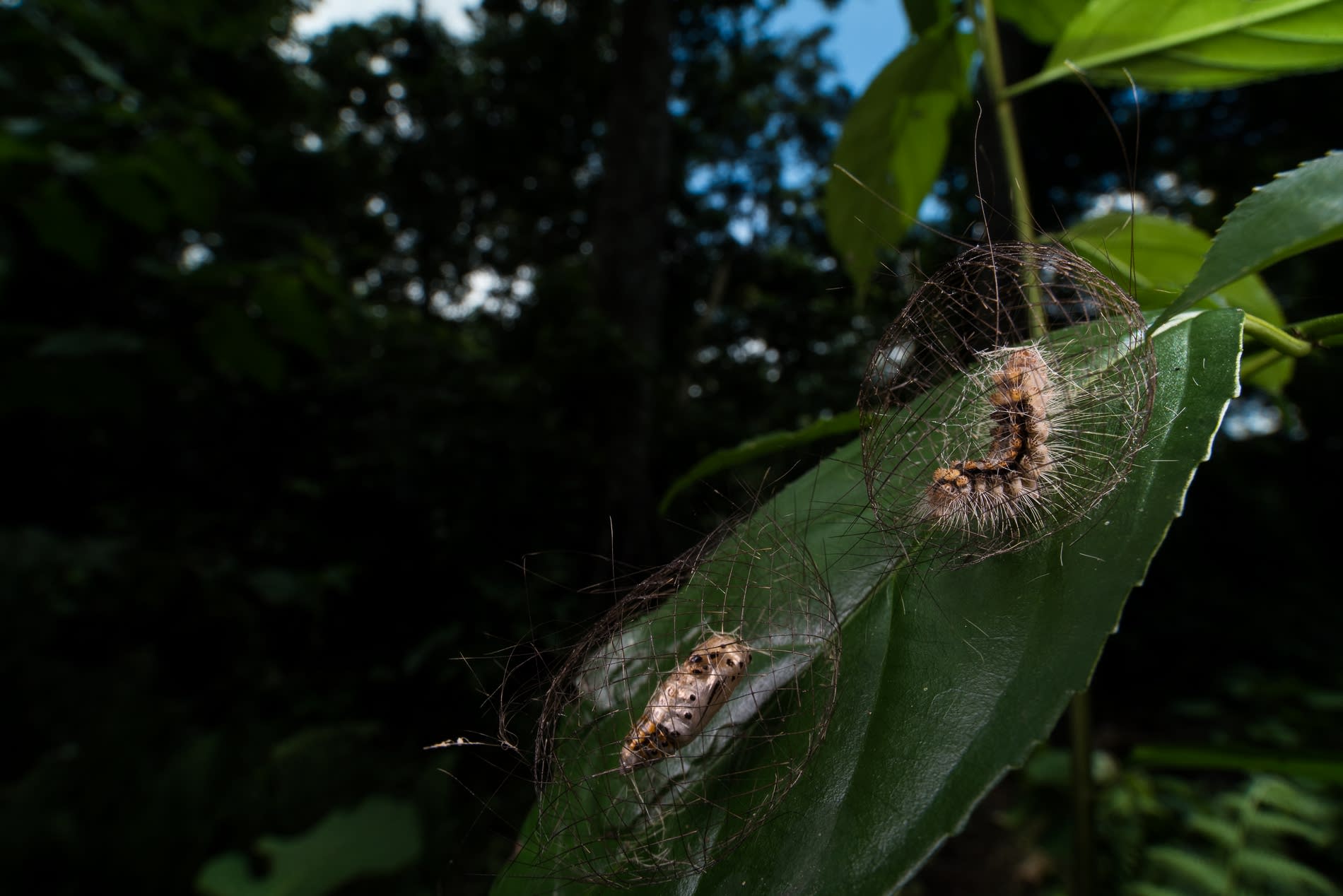 Listen to this article
•
15:34 min
Listen to this article
•
15:34 min
Globally there are about 3,000 species of lichen-feeding moths. They are from the tribe Lithosiini, which belongs to a larger group of moths called “tiger moths”. Their larvae are lichenivores, i.e. they feed on lichens found on tree trunks.
The bright colouration in adults is “aposematic”— a warning sign to predators that the moth is toxic. It is unpalatable to many potential predators due to toxins ingested and metabolised at the larval stage and retained through metamorphosis into adulthood. These moths have some interesting sensory abilities, both as caterpillars and adults. Like typical adult tiger moths, they have “ears” located on their thorax. They also make a variety of ultrasonic sounds with the tymbal organs on their thorax, which insectivorous bats, the most formidable of moth predators, can pick up. These click sounds warn bats that the moth is unpleasant to eat while also jamming the bats’ sonar system. These moths have it all!
Cyana is a lichen-feeding moth genus with a geographic range that spans Africa, East and Southeast Asia, and Australasia. There are about 176 species in Asia, with about 36 in India. These moths have distinct red-bordered white wings with black spots, though the forewing pattern varies with species. They have three discrete life-history stages. The egg hatches into a larva, which feeds, moults, and grows larger, and then pupates (pupal stage) and emerges as an adult that looks quite different from the larva. These insects are “holometabolous”, meaning they undergo a complete metamorphosis or change. Insects that undergo complete metamorphosis not only have a physical transformation, but their diet, survival instincts, and dependency on different senses also change. The peculiar process of metamorphosis by which animals undergo physical transformation after birth has bewildered us for ages, feeding myths and mysticism. Cyana moths exhibit a fascinating metamorphosis process that is unlike any other insect.
Apart from efficient eating machines, Cyana larvae are also good at protecting themselves. Caterpillars of this group of moths generally have a layer of urticating (causing stinging or prickling sensation) hairs called setae, which can irritate attackers. Setae (or setal hairs) provide a defence against birds and predatory insects such as parasitoid wasps which find it difficult to penetrate beyond the hair to lay eggs beneath the caterpillar’s skin. Sometimes, they may hang themselves midair vertically from their host plants with thread-like structures, making it difficult for predators to locate them.
Photo: Hayath Mohammed (right)



In the world of insect metamorphosis, countless strategies exist to enable insects to colonise every corner and diversify to vast numbers. Evolutionarily, the process of metamorphosis prospered because young and adults of the same insect species occupied different ecological spaces and did not compete for the same resources. The niches they occupy are small. Undergoing metamorphosis, they can further divide their environment into smaller parts. At each stage, they occupy a different habitat and become specialised in it. They rule the world by their sheer numbers and strategies of adaptation. As rightly portrayed by the renowned biologist EO Wilson, invertebrates (mostly insects) are the “little things that run the world”.










